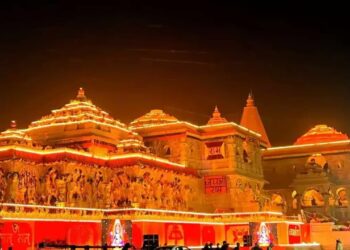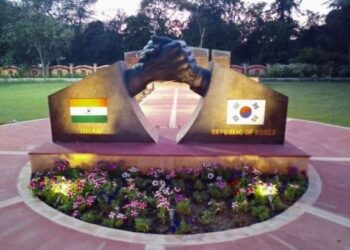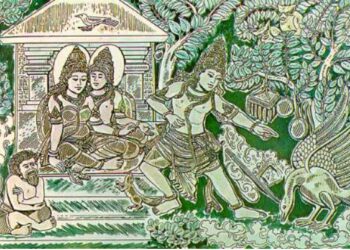India is a land with a gloriously rich cultural heritage that expresses itself in the form of our temples, rituals, festivals, customs, and sacred pilgrimage sites. This heritage is Bharat’s foundation pillar and a powerful bond that unites us all. As Indian we must take pride in our nation’s rich history and collaborative effort needs to be made to preserve our traditions and traditional knowledge and promote it globally.
There have been a lot of initiatives by the government to revive and redevelop various sacred pilgrimage sites and develop the required infrastructure to connect these religious sites so that a common person can easily reach these places. Not just this, the government has taken much-needed steps in bringing back the innumerable priceless artifacts of deep cultural and religious significance that had been stolen and smuggled abroad.
After decades of neglect, the cultural heritage of India has become the focus area and is being revived in a substantial way by PM Modi whose vision is to develop “Ek Bharat Shrestha Bharat.”
PRASHAD (Pilgrimage Rejuvenation and Spiritual, Heritage Augmentation Drive)
There have been a lot of efforts undertaken by the government to protect, preserve and promote India’s cultural, spiritual, and national heritage. The scheme ‘National Mission on Pilgrimage Rejuvenation and Spiritual, Heritage Augmentation Drive (PRASHAD)’ was launched under which 41 pilgrimage destinations have been identified across India for holistic development to not only enhance the tourist attractiveness but also provide a complete religious tourism experience.
These destinations include Dwarka and Somnath in Gujarat, Varanasi and Mathura in Uttar Pradesh, Badrinath, Kedarnath, Gangotri and Yamunotri in Uttarakhand to name a few. Under this scheme, world-class infrastructure will also be built for connectivity to these areas along with promotion of local arts, culture, handicrafts and cuisine of such places to generate livelihood for the local communities living at these places and improve their standard of living thus strengthening the local economy.
Out of these places, Somnath temple that was destroyed multiple times by foreign invaders and was rebuilt in 1995 has been redeveloped on a massive scale which is inclusive of 1.5 km long Samudra Darshan Path, a wall that shows attractive paintings of Lord Shiva, Ahilyabai temple complex and public plaza for tourists.
In addition to this, Kedarnath redevelopment project was launched in 2017 that included major reconstruction projects at Kedarnath shrine such as facilities for devotees, construction of retaining walls and ghats at the Mandakini and Saraswati rivers along with unveiling the idol of Adi Shankaracharya at the Kedarnath Temple that was destroyed in floods. Along with this, Char Dham National Highway connectivity program has been launched to connect four pilgrimage sites of Yamunoti, Gangotri, Kedarnath and Badrinath.
This program will provide an all-weather road network of 889 km to be built connecting the Char Dhams and a rail link between Rishikesh and Karnprayag to be built for a seamless pilgrimage journey to Char Dham. This clearly showcases that the central government is committed towards preserving and promoting Indian culture and heritage.
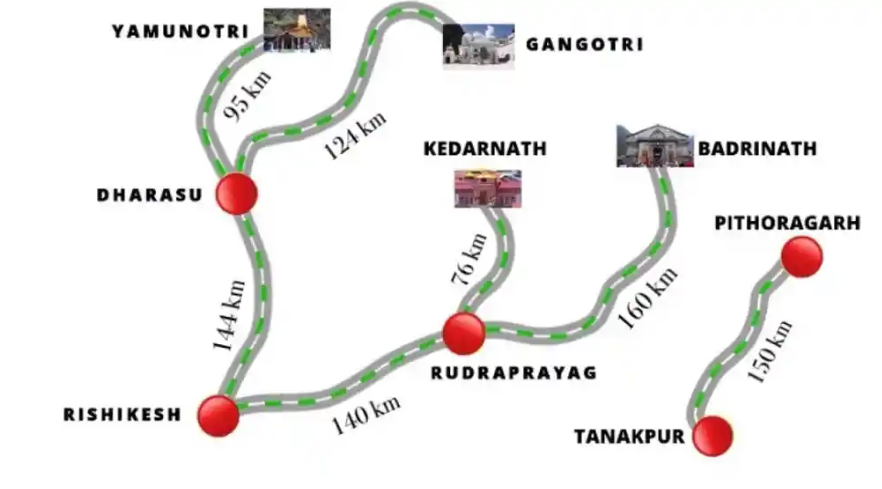
CHAR DHAM YATRA PROJECT
Another massive development has been of world class Kashi Vishwanath Corridor under which Shri Kashi Vishwanath Temple has been connected to the banks of River Ganga along with building of a new campus encompassing an area of about 5 lakh square feet containing 23 buildings that provide renovated temples, tourist service, Vedic Kendra, museum, gallery and food court.
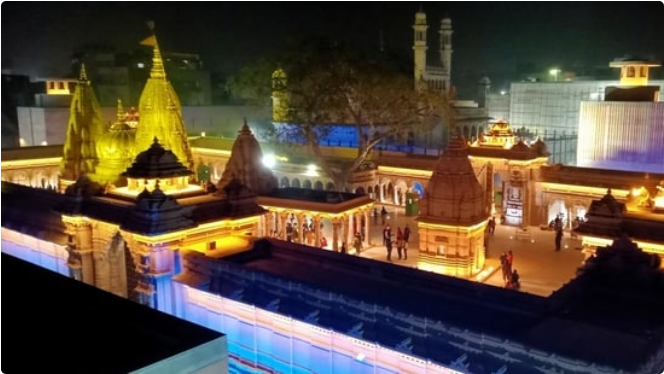
SHRI KASHI VISHWANATH TEMPLE
On the similar lines, Mahakaleshwar Temple Corridor has been built in Ujjain at the cost of Rs 800 crore as the longest corridor in India with length of 920 meters and the entire corridor has been decorated with unique artefacts and sculptures.
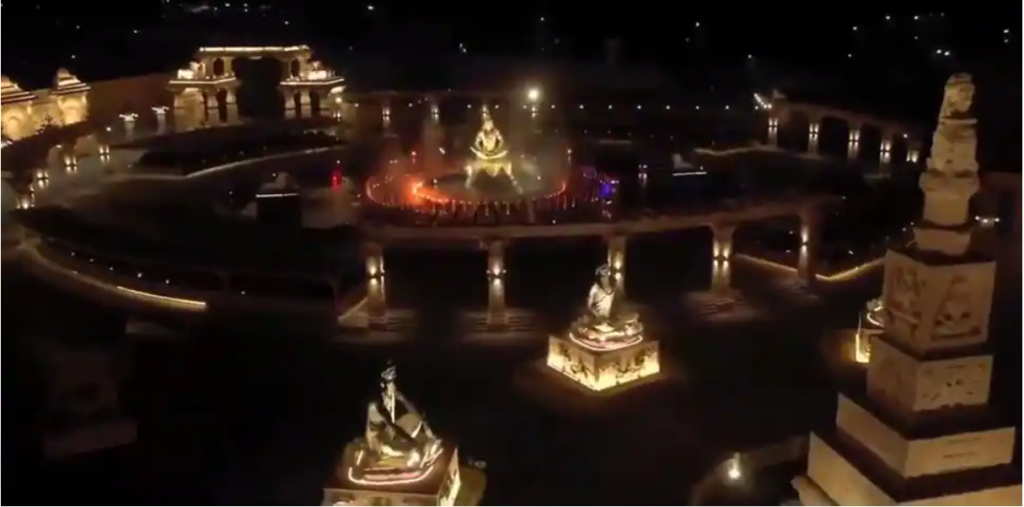
SHRI MAHAKALESHWAR TEMPLE
The revamp of temples has been done in Jammu and Kashmir as well which includes restoration of Raghunath Temple and renovation of Sheetalnath Temple that was opened for public in February 2021 after 31 years. Perhaps, the biggest milestone towards preservation of cultural heritage is rebuilding of Ram Janmabhoomi wherein Ram Mandir complex is being constructed in Ayodhya wherein the temple area covers nearly 2.7 acres and the whole complex is spread across 70 acres. This grand structure being built has been equipped to host about a million devotees at any time and will be open from January, 2024 for the pilgrims.
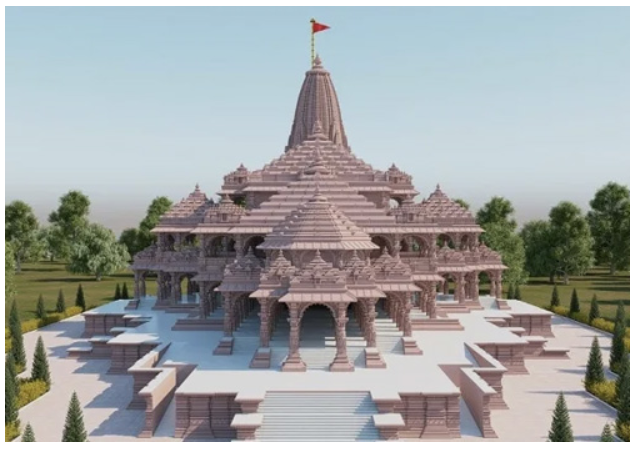
SHRI RAM JANAMBHOOMI TEMPLE
In addition to this, the scheme of ‘Swadesh Darshan’ was launched under which 15 tourism circuits are being developed that includes Krishna Circuit in Haryana that is focused on development of tourism infrastructure at places related to Mahabharat in Kurukshetra, Coastal circuit in Tamilnadu that includes development of Mamamallapuram, Rameshwaram, Manpadu and Kanyakumari, Spiritual Circuit in Manipur that consists of development of Shri Govindajee Temple, Shri Bijoy Govindajee Temple, Shri Gopinath Temple, Shri Bungshibodon Temple and Shri Kaina Temple to highlight few of these circuits.
HRIDAY (National Heritage City Development and Augmentation Yojana)
Additionally, HRIDAY (National Heritage City Development and Augmentation Yojana) scheme was launched in 2015 for development of 12 heritage cities which is aimed at not just development of few monuments in a city but development of entire city inclusive of planning, its basic services, quality of life to its communities, its economy and livelihoods, cleanliness, security, reinvigoration of its’ soul and explicit manifestation of its character. These cities include Dwarka, Varanasi, Kancheepuram, Velankanni, Ajmer, Amravati, Amritsar, Badami, Gaya, Mathura, Puri and Warangal. This scheme will not only help in conservation of heritage but will also facilitate the holistic development thus ensuring increased economic growth of heritage cities. Also, Buddhist Circuit is being built for ease of access to the Buddhist Sites for the pilgrims.
The heritage preservation has been further strengthened by the movement “Bring Our Gods Home” under which India’s precious cultural artefacts and antiques have been brought back home. These idols not only exemplify India’s sculpture skills but are symbolic of India’s soul and faith. Around 228 stolen artefacts have been brought back since 2014 due to PM Modi’s diplomatic initiatives. The assertion on cultural front by PM Modi has been tremendous and the government is rejuvenating and restrengthening our rich cultural heritage.
References
https://tourism.gov.in/sites/default/files/SD%20-%20State%20wise%20list%20of%20projects.pdf
https://swadeshdarshan.gov.in/index.php?State
https://tourism.gov.in/sites/default/files/2021-12/Scheme%20Guidelines_8_0.pdf


